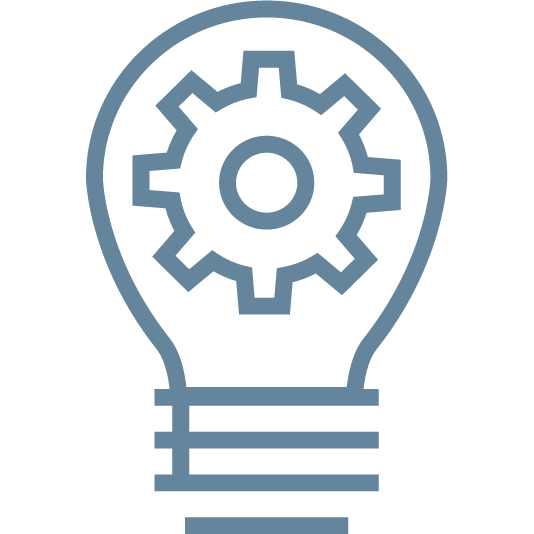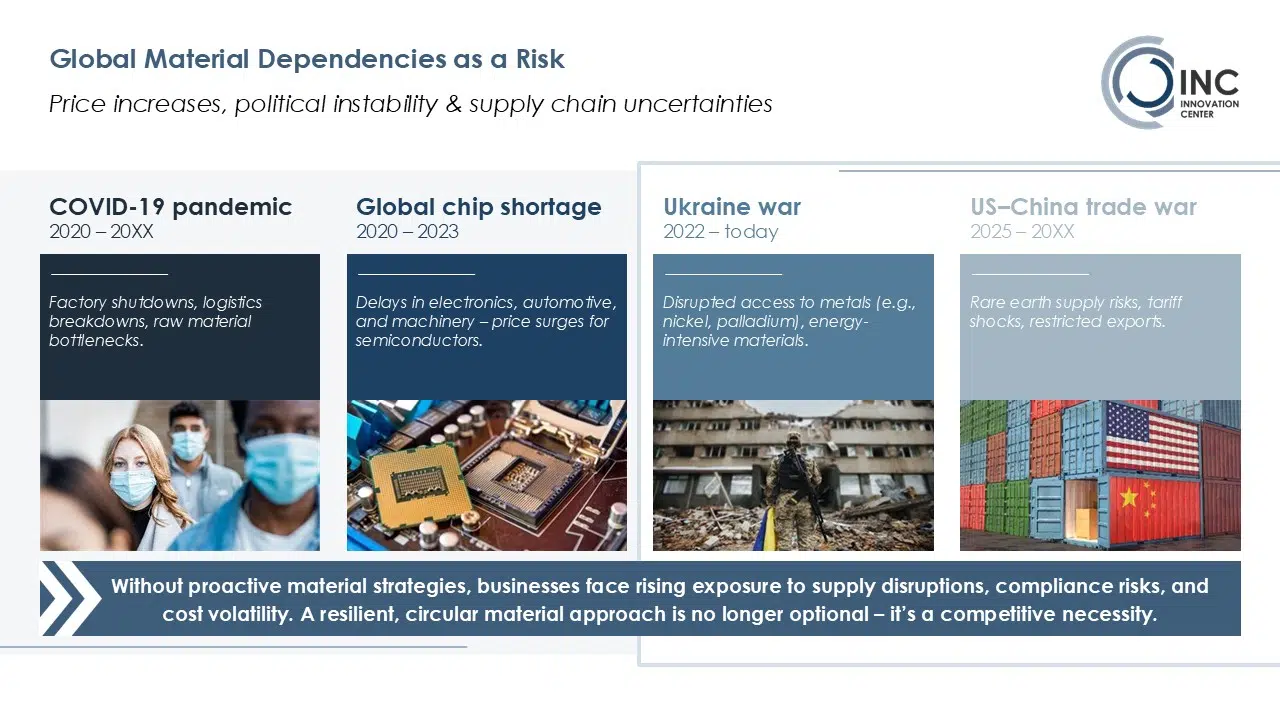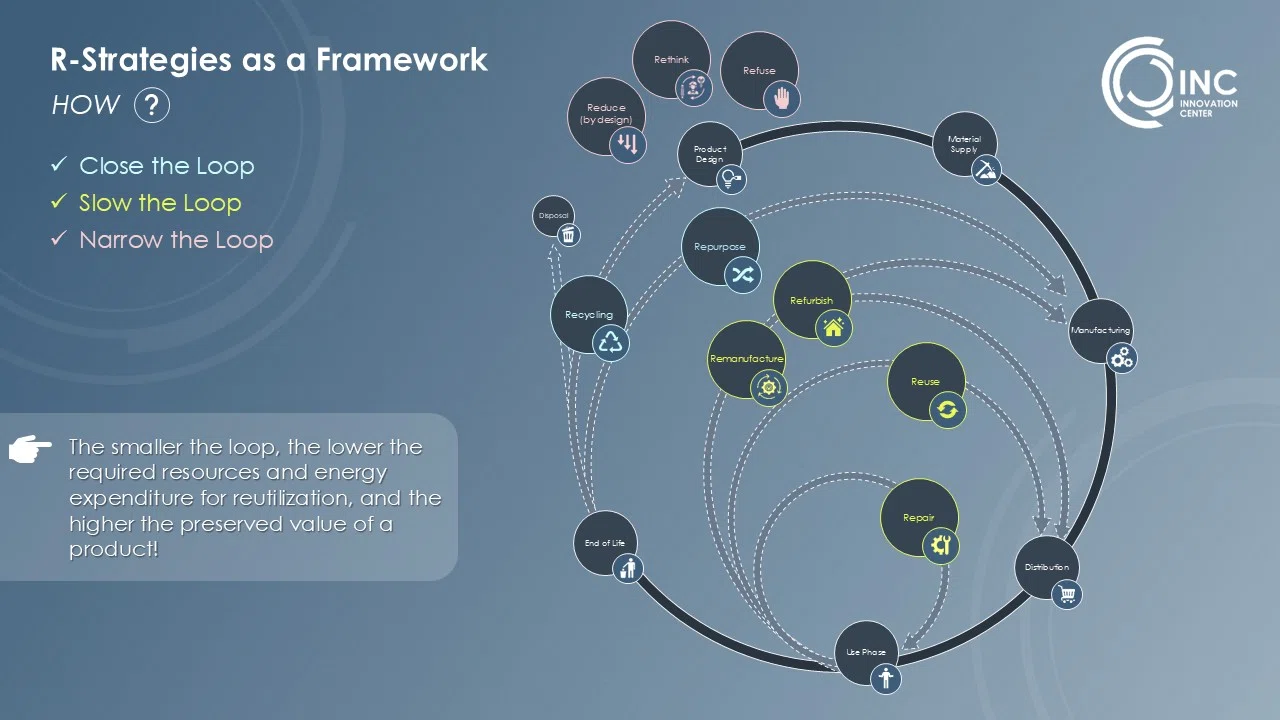

Strategic Materials
Selected Projects
Circular Product Design & Take-Back Models for Reusable Systems
Reusable building systems such as modular wall elements offer great potential for circularity, but only if they are designed for disassembly and embedded in viable take-back models. Despite growing regulatory pressure and sustainability goals, many products still fail to return to the manufacturer or value chain at the end of their lifecycle. The core challenge: enabling reuse through smart product design, reverse logistics, and business model innovation.
Approach:
Product Redesign for Circularity: The modular wall system was re-engineered to enable easy disassembly and material separation. Components such as gypsum boards, profiles, and insulation layers were adapted to allow reuse or recycling without compromising performance
Reverse Logistics & Ecosystem Mapping: A reverse logistics framework was developed, including stakeholder mapping across logistics, warehousing, and refurbishment. Barriers such as a lack of incentives and fragmented responsibilities were identified and addressed through ecosystem design
Business Model Innovation: Multiple circular business models were evaluated, ranging from deposit systems and buyback schemes to return-for-reward programs. These models were tested for economic viability and stakeholder acceptance, forming the basis for scalable implementation
Recycling Technologies for Laminated Multi-Material Systems
The recycling of laminated materials such as safety glass used in automotive and architectural applications faces significant challenges due to their complex, multi-layered structure. These systems often combine glass with polymer interlayers (e.g. PVB, EVA), metallic coatings, and adhesives, which hinder efficient separation and recovery. Despite growing regulatory pressure and sustainability goals, most laminated materials still end up in low-grade applications or landfill. The core challenge: enabling high-quality material recovery while overcoming technical, economic, and logistical barriers.
Approach:
Technology Scouting & Evaluation: A broad landscape of recycling technologies was assessed, including mechanical, chemical, and laser-based separation methods. Technologies such as cryogenic separation, selective laser ablation, and mechanochemical treatment were evaluated for their ability to separate glass from polymer interlayers and coatings.
Material & Process Analysis: The recyclability of interlayer materials like PVB and EVA was analyzed. While PVB recycling is technically feasible, it often fails to meet optical quality standards for reuse in laminated glass. EVA, though promising in terms of performance, currently lacks mature recycling solutions.
Design for Recycling & Identification Technologies: To enable future recyclability, the project explored design adaptations and identification technologies for interlayer materials. This includes developing sorting systems and labeling strategies to distinguish material types during end-of-life processing.
Stakeholder Engagement & Value Chain Mapping: Interviews with recyclers, material suppliers, and technology providers helped identify bottlenecks and opportunities across the value chain. A roadmap was developed to guide future collaboration and innovation efforts
PFAS Substitution
The industrial sensor sector is facing increasing pressure due to upcoming PFAS restrictions, which affect materials like PTFE, PVDF, and PEEK commonly used for corrosion resistance and signal transmission. These regulations pose a significant challenge for manufacturers relying on PFAS-based components. The core issue: identifying viable material alternatives that meet demanding technical requirements while maintaining performance and compliance.
Approach:
Material Screening & Technology Scouting: PFAS-free alternatives were identified through systematic scouting. Candidates such as PPS, TPI, and polyetherimides were evaluated based on dielectric properties, chemical resistance, and processability.
Regulatory & Economic Assessment: Each material was assessed for regulatory compliance (e.g. REACH), technology readiness, and cost structure to ensure technical and economic viability.
Design Adaptation & Product Strategy: Design modifications were explored to integrate alternative materials without compromising functionality. Strategic recommendations supported future product development under PFAS constraints.
Stakeholder Engagement: Expert interviews and supplier dialogues helped validate material choices and build a knowledge base for ongoing substitution efforts.
Urban Mining & Circular Design in Telecommunications
The telecommunications industry faces growing pressure to reduce its environmental footprint and transition to circular product systems. Electronic devices like routers contain valuable components processors, memory chips, connectors that are often discarded despite remaining functional. This project explored how Urban Mining and Circular Design can unlock new value by reusing components from end-of-life smartphones in new telecom devices. The core challenge: designing scalable systems for component recovery, reuse, and integration into new products while maintaining performance and compliance.
Approach:
Component Reuse & Product Redesign: A DSL router prototype was developed using reused components from old smartphones, including mainboards, processors, and connectors. The design followed a modular approach to enable integration of second-life electronics without compromising functionality.
Circular Supply Model: Instead of traditional recycling, the project focused on targeted recovery of functional components, an Urban Mining strategy that keeps high-value materials in circulation. This approach reduced raw material consumption by 30% and lowered CO₂ emissions by up to 50% compared to conventional routers.
Cross-Industry Collaboration: The initiative brought together partners from electronics, telecom, and sustainability sectors to co-develop the prototype and roadmap. This collaborative model enabled rapid prototyping and knowledge sharing across disciplines.
Advanced Materials: Cross-Industry Innovation & Strategic Roadmapping
Technological progress is increasingly driven by advanced materials ranging from lightweight composites and nanostructured coatings to smart polymers and high-performance ceramics. These materials offer new functionalities across industries such as automotive, aerospace, energy, and healthcare. The core challenge: identifying relevant developments early, evaluating their industrial applicability, and translating them into strategic innovation roadmaps.
Approach:
Trend Scouting & Material Mapping: A structured overview of emerging material trends was developed using a “Material Performance Tree” framework. This included segmentation by material type (e.g. polymers, metals, ceramics) and function (e.g. thermal conductivity, corrosion resistance, lightweight design).
Expert Landscape & Technology Readiness: Relevant research institutions and industrial developers were identified. Selected materials were assessed for processability, cost structure, innovation potential, and technology readiness level.
Application Analysis & Roadmap Development: Use cases were derived for each material, including cost-benefit evaluations and industry-specific application scenarios. Strategic roadmaps were created to guide implementation and internal decision-making.
Consortium-Based Knowledge Exchange: The project was conducted as a cross-industry consortium with over 15 partners, enabling interdisciplinary exchange and collective prioritization of focus areas. All participants gained access to a shared knowledge base and long-term usage rights for the results.
Ready to Start Your Materials Transition?
Let’s Shape Your Circular Future Together!










.jpg)


















































%20(6).jpg)
%20(1).jpg)

